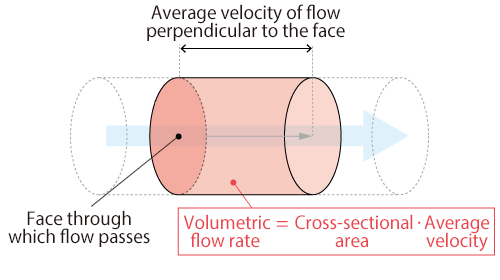

The first method is usually impractical for many applications. The second method is most common and practical. Calculate it using velocity or volume flow rate multiplied by the fluids density.Let the liquid flow into a weigh tank and measure the time taken.There are two common methods to measure a mass flow rate 00103m 3/s Answer: 00103m 3/s How do we measure mass flow rate? Density of water at 50°c (323K) at atmospheric pressure = 988.05kg/m 3 Density of water at 80°c (323K) at atmospheric pressure = 971.80kg/m 3 Inlet Volume flow rate = 0.001012m 3/s Mass flow rate at inlet = 988.05kg/m 3 x 0.001012m 3/s = 1kg/s Mass flow rate at inlet = 1kg/s ÷ 971.80kg/m 3 =. Water enters a pipe at 50°c at 1kg/s, it is heated and exits at 80°c at 1kg/s, assuming no change in pressure, what will the volumetric flow rate be. Therefore, if water enters a pipe at 1 kg/s it must leave the pipe at 1 kg/s also, as long as there are no leaks! However, the volume flow rate can change and will do so if the density changes either through a change in pressure or temperature. Mass is always conserved, it is not created or destroyed. The symbol for mass flow rate is an m with a dot above e.g. We (pretty much the entire world) measure mass flow rate in the SI units of kilograms per second (kg/s) except in America where they still use British Imperial units of pounds mass per second (Ibm/s). ( Click here to see the difference between weight and mass). Mass flow rate is simply a measurement of the amount of mass (weight) passing by a single point over a length of time.

In this article we will focus on mass flow rate, for velocity flow rate click here and for volume flow rate click here.



 0 kommentar(er)
0 kommentar(er)
